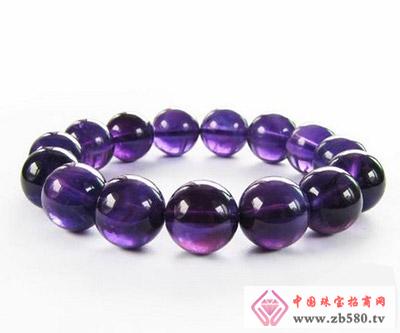Simple identification of amethyst by 5 identification methods

Noble, versatile purple has always been a color that can't be ignored in the fashion world. Amethyst is the only gemstone with this color. It is naturally favored. There are many non-natural synthetic amethysts in addition to natural amethyst. There are five main methods for identifying natural amethyst and synthetic amethyst. By understanding these five methods for identifying amethyst, it is possible to easily distinguish the true and false of amethyst.
1. The color of natural amethyst is not very uniform or very uneven. Sometimes it will form a deep and dark ribbon, which is easy to distinguish from the visual point of view; while the synthetic amethyst has uniform color, dullness and poor texture.
2. There are inclusions of minerals such as mica, pyrite, magnetite and rutile in natural amethyst; while there are only seed crystals or bread crumbs in the crystals of synthetic amethyst.
3. The gas-liquid inclusions in the natural amethyst appear in groups, sometimes showing a planar distribution and having a flowing state; and the gas-liquid inclusions of the synthetic amethyst exhibiting an isolated spherical shape.
4. Most of the natural amethysts have Brazilian twin crystals; most of the synthetic amethysts are single crystals. This feature is observed under a crossed polarizer. Sometimes water ripples are seen on the polished surface, which is also one of the characteristics of natural amethyst.
5. The infrared spectrum of the synthetic amethyst has an absorption peak at 3450 cm-1; while the natural amethyst has no such absorption peak.
Through the above judgments, natural amethyst and synthetic amethyst can be identified. Of course, it is necessary to accurately and quickly identify the true and false of natural amethyst, and it requires a certain amount of experience.
NANJING BOVOTO INTERNATIONAL TRADE LIMITED COMPANY , http://www.jannybbclothing.com
